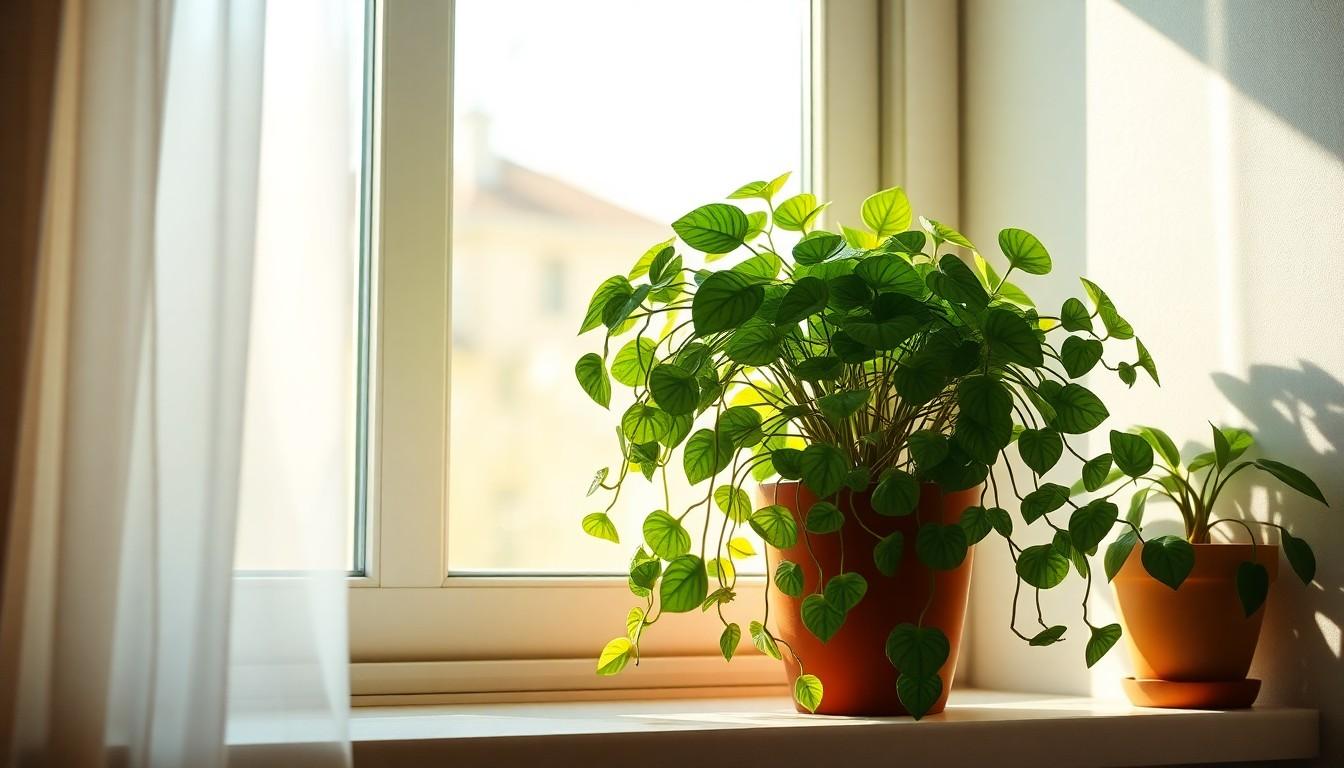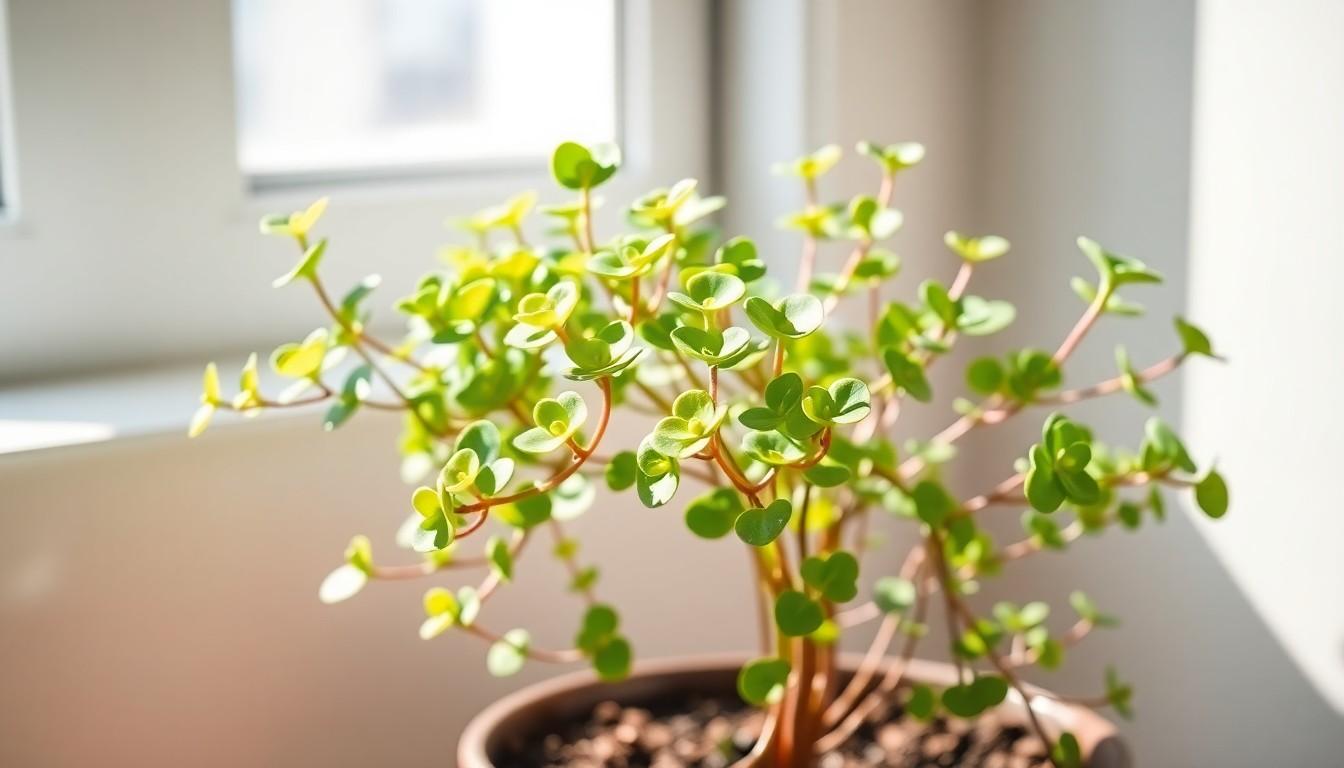If you’re on the hunt for a plant that’s as charming as it is low-maintenance, look no further than the string of turtles. Picture this: tiny, round leaves that resemble little turtles basking in the sun. It’s the perfect conversation starter and an instant mood booster for any room. But don’t let its adorable appearance fool you; this plant has specific needs that, if met, will reward you with lush growth and vibrant health.
Understanding String Of Turtles Plant
String of turtles, scientifically known as Peperomia prostrata, showcases small, round leaves that create a unique visual appeal. This plant thrives in specific conditions that enhance its charm and vibrancy. Proper lighting plays a critical role in its growth. Bright, indirect sunlight is ideal for promoting healthy leaf development while preventing leaf burn.
Soil selection matters for string of turtles. A well-draining potting mix, often comprised of cactus or succulent blends, ensures adequate moisture control. Overwatering poses a significant risk, so allowing the top layer of soil to dry out between waterings is recommended.
Temperature preferences are essential too. This plant thrives at temperatures between 65°F and 80°F. Exposure to temperatures below 50°F can cause stress, leading to stunted growth. Humidity also supports healthy growth. Moderate humidity levels between 40% and 60% are beneficial, which can be achieved by placing a small humidifier nearby or misting the leaves occasionally.
Fertilizing is another aspect to consider. Using a diluted liquid fertilizer during the growing season every four to six weeks encourages robust growth. Repotting becomes necessary when the plant outgrows its container; usually, this occurs every couple of years, ideally in spring.
Pest management is crucial for maintaining health. Keeping an eye out for common pests, such as mealybugs and spider mites, ensures quick intervention. Regularly inspecting the plant and maintaining cleanliness around the leaves contributes to overall plant health.
Ideal Growing Conditions

String of turtles plants thrive under certain conditions that contribute to their growth and visual appeal. Careful attention to these aspects ensures robust health and a vibrant appearance.
Light Requirements
Bright, indirect sunlight promotes healthy leaf development in the string of turtles. Direct sunlight can cause leaf burn, leading to brown tips and faded color. Placing the plant near a window with filtered light yields optimal results. Observing the leaves can indicate the plant’s light needs; if they become leggy, it signals a need for more light. Hunter and flowering during the winter months may require additional illumination through artificial grow lights.
Temperature and Humidity
Ideal temperature for a string of turtles ranges between 65°F and 80°F. This plant tolerates a slight dip in temperature but should not undergo prolonged exposure to temperatures below 50°F. Regarding humidity, moderate levels between 40% to 60% suit this species well. Too much humidity can lead to mold growth, while too little may result in dry leaves. Regular misting or using a humidity tray may help maintain desired humidity levels, especially during dry winter months.
Watering And Soil Needs
Proper watering and soil selection play critical roles in the health of the string of turtles plant. Overwatering can lead to root rot, while underwatering prevents growth.
Watering Schedule
Watering should occur when the top inch of soil feels dry. This typically translates to every 1 to 2 weeks, depending on environmental conditions. In warmer months, more frequent watering may be necessary. Seasonal changes affect moisture rate; adjust accordingly during winter when the plant’s growth slows. Always use room temperature water to avoid shocking the roots.
Suitable Soil Mix
Choosing the right soil mix is vital for optimal growth. A well-draining potting mix is recommended to prevent water retention. Cactus or succulent mixes work well, as they allow excess moisture to escape. Adding perlite or sand can enhance drainage further. This combination supports healthy root development while ensuring the plant receives adequate nutrients. Regularly check drainage holes to ensure water flows freely.
Fertilizing String Of Turtles
Fertilizing a string of turtles plant enhances its growth and vitality. Proper care helps to maintain the plant’s health and during the growing season, using the right type of fertilizer is crucial.
Types of Fertilizers
Balanced liquid fertilizers, with an NPK ratio of 10-10-10 or similar, work well for the string of turtles. Organic options like fish emulsion or seaweed extract provide additional nutrients. Slow-release fertilizers offer a convenient alternative, feeding the plant gradually. When using fertilizers, make sure they are diluted to half strength to prevent root burn. Both organic and synthetic choices provide essential nutrients for robust growth.
Frequency of Feeding
Feeding should occur every 4 to 6 weeks during the growing season, typically from spring through early fall. Fertilization can be reduced during the dormancy period, allowing the plant to rest. To determine if the plant needs fertilizer, observe its growth; leggy or pale leaves often indicate nutrient deficiency. Adjust the frequency according to the specific conditions of your environment, especially if the plant shows signs of stress.
Common Pests and Problems
String of turtles plants can experience a variety of pests and issues. Regular inspections help identify these problems early to ensure plant health.
Identifying Pests
Mealybugs appear as small, fuzzy white spots on leaves and stems. Spider mites, on the other hand, create fine webbing, particularly on the undersides of leaves. Aphids cluster on new growth, sucking plant sap and causing distorted leaves. As for scale insects, they resemble small bumps on stems and leaves, further stressing the plant. Affected leaves may exhibit yellowing or wilting. Establishing a routine check can help catch these pests before they escalate.
Treatment and Prevention
Treatments for these pests often include insecticidal soap or neem oil to eliminate infestations. Frequent watering and maintaining humidity cut down on spider mite occurrences. Quarantining new plants prevents pests from spreading to the string of turtles. Cleaning the leaves with a damp cloth removes dust, making it harder for pests to thrive. Applying these preventive measures consistently enhances the plant’s resilience against pests and problems.
Conclusion
Caring for a string of turtles plant can be a rewarding experience. With its unique appearance and low-maintenance needs it fits perfectly in any indoor space. By providing the right light temperature and humidity levels one can ensure this delightful plant thrives.
Regular watering and proper soil selection are crucial to prevent overwatering and promote healthy growth. Keeping an eye out for pests and addressing any issues promptly will help maintain its vibrant appearance.
With a little attention to its specific needs the string of turtles plant can flourish and bring joy to any plant lover’s collection.

